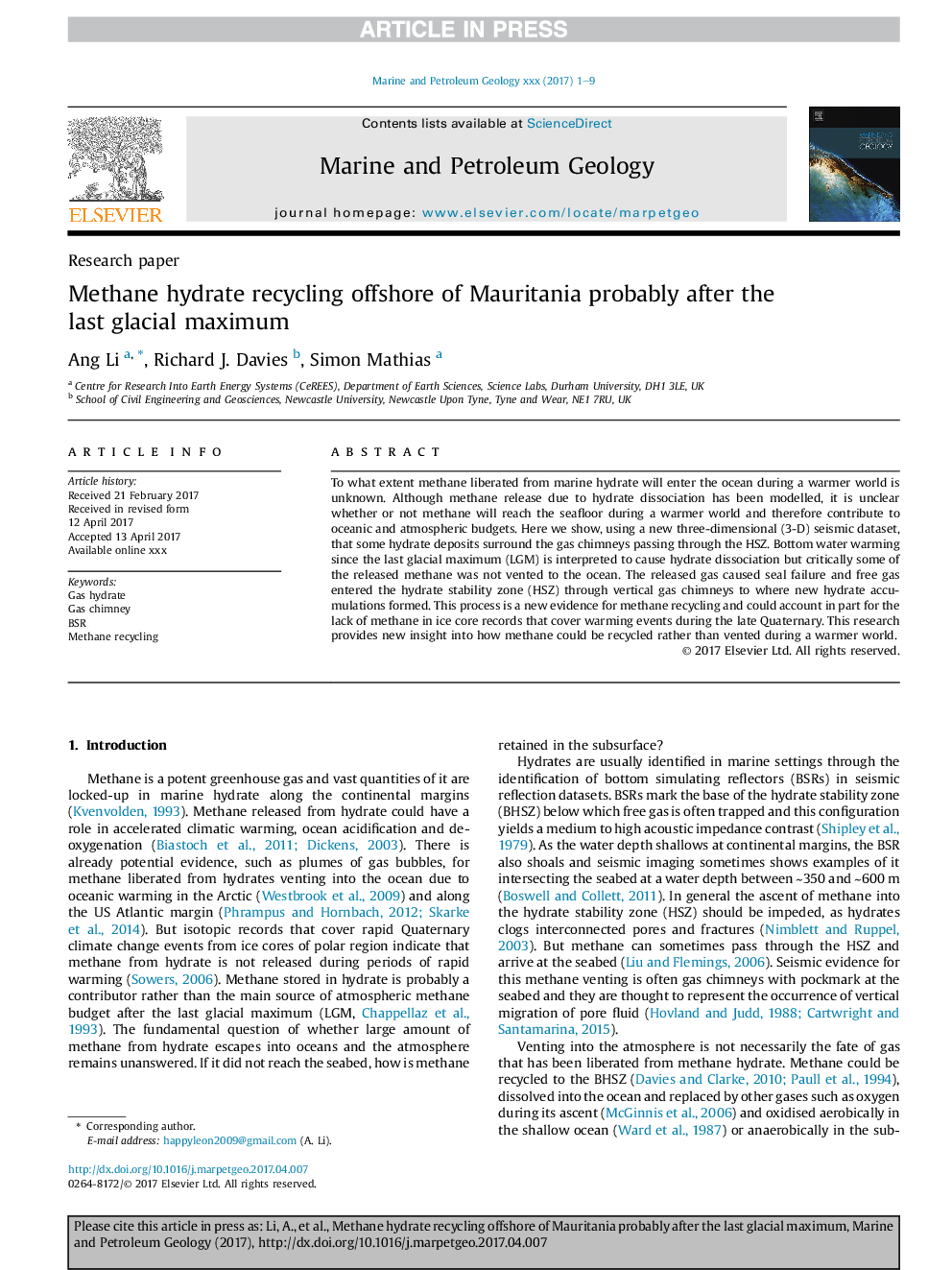| Article ID | Journal | Published Year | Pages | File Type |
|---|---|---|---|---|
| 5782064 | Marine and Petroleum Geology | 2017 | 9 Pages |
Abstract
To what extent methane liberated from marine hydrate will enter the ocean during a warmer world is unknown. Although methane release due to hydrate dissociation has been modelled, it is unclear whether or not methane will reach the seafloor during a warmer world and therefore contribute to oceanic and atmospheric budgets. Here we show, using a new three-dimensional (3-D) seismic dataset, that some hydrate deposits surround the gas chimneys passing through the HSZ. Bottom water warming since the last glacial maximum (LGM) is interpreted to cause hydrate dissociation but critically some of the released methane was not vented to the ocean. The released gas caused seal failure and free gas entered the hydrate stability zone (HSZ) through vertical gas chimneys to where new hydrate accumulations formed. This process is a new evidence for methane recycling and could account in part for the lack of methane in ice core records that cover warming events during the late Quaternary. This research provides new insight into how methane could be recycled rather than vented during a warmer world.
Keywords
Related Topics
Physical Sciences and Engineering
Earth and Planetary Sciences
Economic Geology
Authors
Ang Li, Richard J. Davies, Simon Mathias,
